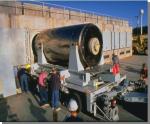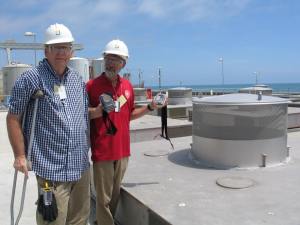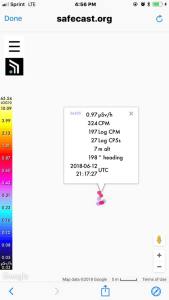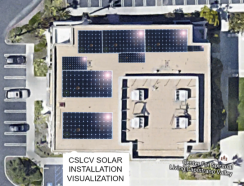
There is a clean water crisis affecting billions of people around the world. What causes it and what can you do to help? Here’s what you need to know.
The Critical Facts You Need To Know About The Clean Water Crisis
Water is essential for life. Not only does it connect every aspect of life, it’s a fundamental human need.
Every person requires at least 20-50 liters of clean, safe water daily for drinking, cleaning, cooking and more. And despite scientific advancements, about 780 million people do not have access to an improved water source, with an estimated 2.5 billion people lacking access to improved sanitation.
That’s more than 35 percent of the earth’s population.
As chef Marcus Samuelsson says:
Clean water and access to food are some of the simplest things that we can take for granted each and every day. In places like Africa, these can be some of the hardest resources to attain if you live in a rural area.
Without clean, potable water, or ways to sanitize water, people are left with dirty, deadly water that can make them seriously ill or have fatal outcomes.
Millions of people find themselves in the midst of a clean water crisis.
Much of the world’s population get their water from rivers, lakes, and other bodies of water, and the vast majority of those people are the world’s poorest people.
According to The Nature Conservancy, about half of the world’s 500 most important rivers – the water sources for hundreds of millions of people – are either seriously polluted or seriously depleted. In other words, millions of people have no option but to draw their water from sources that are rampant with pollution.
In this article, we’re going to give you the what, why, and how of the clean water crisis. In order to make a difference, you need knowledge. Here’s what you need to know.
What Is the Clean Water Crisis?
Put simply, the clean water crisis describes the global epidemic of freshwater pollution and depletion. Every single day, people around the world die from a lack of water, lack of access to sanitation, lack of clean and potable waters, and other waterborne diseases.
Freshwater supplies are limited, water sources are vulnerable, and the poor are often disadvantaged in that many of them live in water-deficient countries.
It’s estimated that about 2.5 billion people lack access to improved sanitation and that about 780 million people don’t have access to an improved water source. Even more:
Approximately 801,000 children younger than 5 years of age perish from diarrhea each year, mostly in developing countries.
Unsafe drinking water, polluted water used for hygiene, and inadequate sanitation together contribute to a staggering 88% of deaths from diarrheal diseases.
Trachoma, the world’s primary cause of preventable blindness, is the result of poor hygiene and sanitation.
Want it put even more starkly? Every 90 seconds a child dies from a water-related disease that could have been prevented simply by providing access to clean water.
As Sanjay Wijesekera, global head of UNICEF’s water, sanitation, and hygiene programme says:
If 90 school buses filled with kindergartners were to crash every day, with no survivors, the world would take notice.
According to the World Health Organization and UNICEF, the regions with the lowest coverage of sanitation and potable water are sub-Saharan Africa (at about 31 percent), Southern Asia (at about 33 percent), and Easter Asia (at 65 percent).
Why sub-Saharan Africa? The answer is complicated, just as the water crisis is.
First, Africa is a predominantly arid continent, with little rainfall in many areas. Because of this, atmospheric conditions regularly refresh the water supply.
Additionally, many of the freshwater bodies in Africa are controlled and restricted by governments or hopelessly polluted.
Furthermore, the infrastructure required to bring water from the Congo River (the largest supply of fresh water) to the population at large is incredibly expensive. The countries who need this infrastructure most simply can’t afford it.
Finally, the lack of education regarding the sanitary and hygienic use of water results in many people consuming filthy water without being aware of the consequences.
The Effects of Contaminated Water
As briefly noted above, unsafe or polluted water doesn’t just account for fatalities. In fact, unsanitary water can cause numerous waterborne diseases that result in millions of deaths every year.
Over 800,000 children under five years old will die from diarrhea each year that’s been contracted from waterborne illnesses. This amounts to waterborne, diarrheal diseases causing a staggering 11% of the 7.6 millions deaths of children under the age of five.
Millions of people worldwide are also infected with Neglected Tropical Diseases (NTDs) through their water sources. These diseases, like Buruli Ulcer, Trachoma, and Guinea Worm Disease, are most often found in areas with unsafe drinking water, poor sanitation, and insufficient hygiene practices.
Make no mistake, however. Drinking, cooking with, showering with, and using contaminated water doesn’t just make people sick: using contaminated water is a dangerous, deadly practice.
According to the World Health Organization, more than 3.4 million people die as a result of water-related diseases. Most of the fatalities are young children who die of illnesses caused by organisms that thrive in water sources contaminated by raw sewage.
Because there’s no access to sanitation and no modern plumbing, human waste often mixes with local water systems, as well as things like animal waste, fertilizers, and industrial by-products. All of this leads to immense pollution of potable water sources.
How Can You Help The Clean Water Crisis?
If you have access to clean, drinkable water, you might feel too far removed from this issue to help bring about change. But that’s not the case. There are dozens of things you can do to help with the clean water crisis.
It’s possible that simply by going about your daily routines, you’re unknowingly contributing to the pollution of our struggling waterways. Educating yourself on how you can change this and what behaviors you can implement to help will go a long way in helping to solve the clean water crisis.
Some simple things to consider are:
If you have a dog, pick up after him. Animal waste can leak into storm drains and water supplies, polluting the water supply.
Consider how you treat your toilets and sinks. Sewage treatment processes can be hugely affected by flushing non-degradable products and by draining paint, oil, or chemical cleaners into sinks.
Check your faucets and pipes for leaks so as to not waste water, and even check your water meter for hidden leaks. You can even go as far as installing water-saving shower heads and low-flow faucet aerators.
Other simple things like not letting the faucet run, minimizing garbage disposal units, and taking shorter showers can help conserve clean water, too.
On a larger scale, there are bigger things you can do to help conserve clean water, such as donating to programs that are fighting for clean water in these areas. You can also get involved with these programs and offer your services to help people find access to clean water.
Investing in companies and organizations that are fighting for clean water in these regions can help fund reliable water projects that will serve villages and schools.
The Clean Water Crisis: What it Means
Water is a fundamental human need, and each person needs liters upon liters of clean water daily to survive. Unfortunately, people around the world are suffering from lack of clean, potable water. Bodies of freshwater are constantly being depleted and polluted.
This, in turn, leads to millions of illnesses and fatalities every year. Tens of millions of people are made seriously ill or killed by a host of water-related ailments every single year. The saddest part? These illnesses and deaths could be prevented.
The excessive amounts of microbes and chemicals in freshwater sources make it impossible and dangerous to drink, and the contamination is only getting worse.
Because our freshwater sources are limited, it’s absolutely essential that we learn how to conserve and clean our existing water.
We agree wholeheartedly with the World Health Organization, which noted:
In 2010, the UN General Assembly explicitly recognized the human right to water and sanitation. Everyone has the right to sufficient, continuous, safe, acceptable, physically accessible and affordable water for personal and domestic use.
Clean water is precious. Don’t take it for granted.
Article reposted with permission from: https://connectforwater.org/critical-facts-about-clean-water-crisis/















